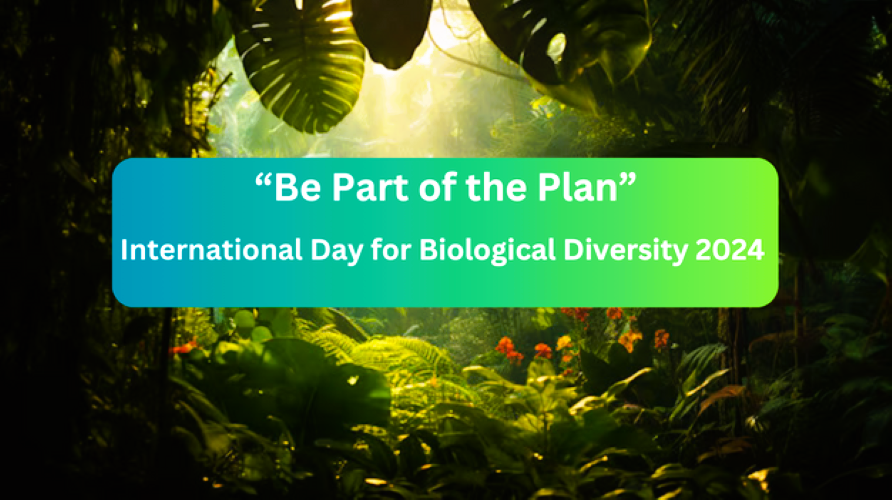
As we celebrate the International Day for Biological Diversity 2024, the theme ‘Be part of the plan’ strikes a chord with the urgent need to tackle biodiversity loss. This year’s theme is a heartfelt call to action, inviting everyone- governments, indigenous and local communities, NGOs, legislators, businesses, and individuals- to come together and support the Kunming-Montreal Global Framework for Biodiversity. Known as the Biodiversity Plan, this ambitious initiative provides a clear and hopeful path to stop and reverse the troubling decline in our planet’s biodiversity.
Urgency of Biodiversity Conservation
Biodiversity, the variety of life on Earth, is the bedrock of our ecosystems, agriculture, and overall planetary health. However, human activities have significantly disrupted this delicate balance. From deforestation and habitat destruction to pollution and climate change, our actions have led to the rapid decline of many species and the degradation of ecosystems. The loss of biodiversity not only threatens wildlife but also undermines food security, water quality, and human health. Thus, the Biodiversity Plan is not just about saving species; it’s about safeguarding our future.
Kunming-Montreal Global Framework for Biodiversity
The Kunming-Montreal Global Framework for Biodiversity, adopted in 2022, outlines critical targets to be achieved by 2030. These include protecting 30% of the planet’s land and sea areas, restoring 20% of degraded ecosystems, and reducing pollution from plastics and excess nutrients by 50%. It also emphasizes the importance of integrating biodiversity values into national and local planning, development processes, and poverty reduction strategies.
Collaboration & Partnership: The Heart of the Plan
Central to the Biodiversity Plan is the idea of collaboration and partnership. No single entity can tackle biodiversity loss alone; it requires the concerted efforts of various stakeholders:
-
Governments play a pivotal role in setting policies, allocating resources, and enforcing regulations that protect biodiversity. National strategies and action plans aligned with the global framework are essential.
-
Indigenous and Local Communities hold traditional knowledge and practices that are vital for sustainable management of natural resources. Recognizing and integrating their contributions is crucial for the plan’s success.
-
Non-Governmental Organizations (NGOs) can mobilize public support, provide expertise, and implement on-the-ground conservation projects. Their role in advocacy and education is equally important.
-
Businesses have a responsibility to adopt sustainable practices that minimize their environmental footprint. By investing in biodiversity-friendly practices, they can contribute significantly to conservation efforts.
-
Individuals can make a difference through everyday actions—reducing waste, supporting sustainable products, and participating in local conservation initiatives. Every small effort counts.
Agriculture: A Key Player in Biodiversity Conservation
There’s a critical intersection between agriculture and biodiversity. Sustainable agricultural practices can significantly contribute to biodiversity conservation. Agroecology, organic farming, and agroforestry are examples of farming methods that promote biodiversity. By maintaining a variety of crops and livestock, these practices not only enhance resilience to pests and diseases but also support a range of species, from pollinators to soil microbes.
Farmers and agricultural stakeholders are encouraged to integrate biodiversity-friendly practices into their operations. This includes conserving natural habitats on farms, using fewer chemical inputs, and adopting crop rotation and diversification strategies. These practices not only protect biodiversity but also enhance soil health, water retention, and crop yields, thereby benefiting farmers directly.
The International Day for Biological Diversity 2024 reminds us that the fight against biodiversity loss is a shared responsibility. By supporting the Kunming-Montreal Global Framework for Biodiversity, we can make significant strides toward a healthier, more sustainable planet. Let’s embrace the theme “Be part of the plan” and take collective action to protect and restore our natural world. Every action, no matter how small, contributes to the bigger picture of biodiversity conservation. Together, we can create a future where both nature and humanity thrive.
















